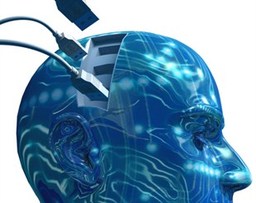| Eli Kinney-Lang |
| Tue 02 Feb 2016, 13:00 - 14:00 |
| AGB seminar room |
If you have a question about this talk, please contact: Iman Tavakkolnia (s1371647)

Abstract: Brain-computer interfaces (BCIs) offer a direct communication channel between a person’s thoughts and a computer. This emerging technology has huge implications in the fields of medicine, engineering and computer science, with potential applications in areas so different as neurorehabilitation and videogames.
Eli Kinney-lang will host an interactive Innovative Learning Week event focusing on having participants learn to design their own brain-computer interface (BCI). The event (Wed. 17th Feb. registration still open) will explore what a brain-computer interface (BCI) is, the current types of BCI, and how raw brain signals produced from thoughts can be translated into a desired outcome, such as moving a mouse on a computer. Participants will be given the opportunity to explore, create and present their own BCI using realworld brain signals.This talk is an opportunity to receive feedback for the informative portion of the ILW event. The current list of participants include a variety of individuals hailing from both science and non-science related fields. It will also serve as an introduction to BCI technology.
Biography: Eli Kinney-Lang received his BSc (1st Hons) in mathematics with a focus in pre-medicine in 2013 from the University of Wyoming, Wyoming USA. His undergraduate research experience in neuroscience led him to several national conferences, receiving a distinguished poster award at the National IDeA Symposium of Biomedical Research Excellence and finding employment as a Junior Specialist in MRI at the University of California, Irvine (2013-2015). Eli recently joined as a PhD student under Dr. Javier Escudero at the University of Edinburgh to undertake research in brain-computer interfaces (BCI). His research interests include BCI, neurorehabilitation, signal processing, and source localization.
Picture source: http://imageofbeast.com/


